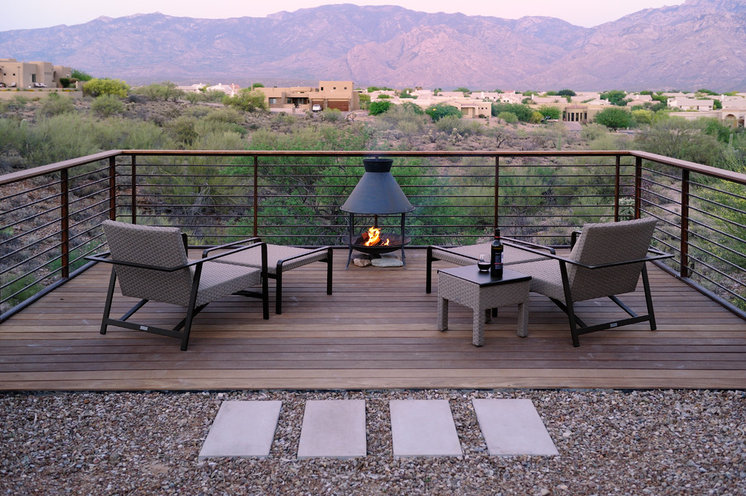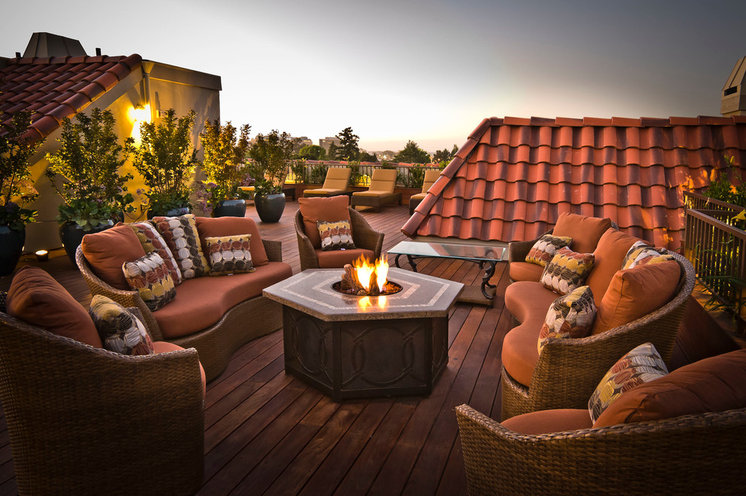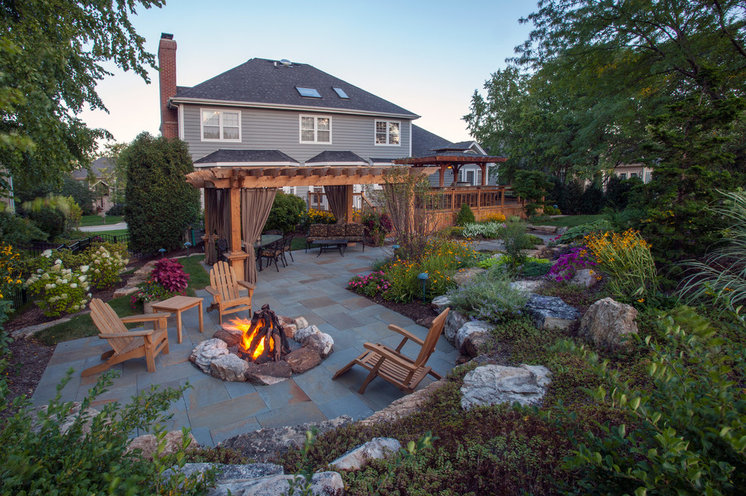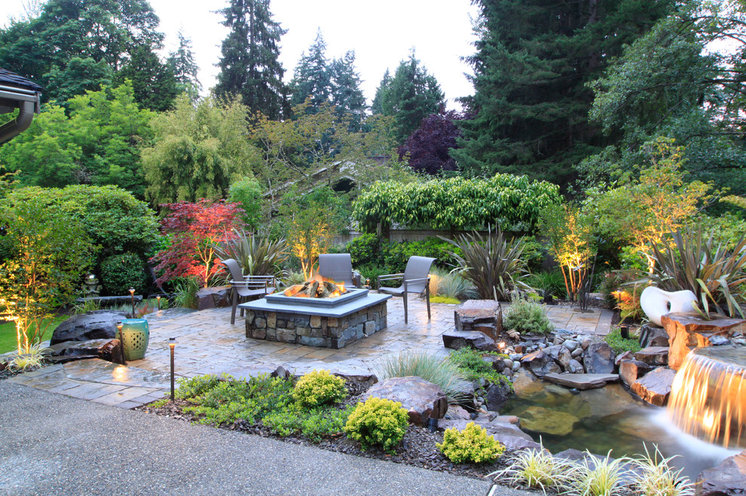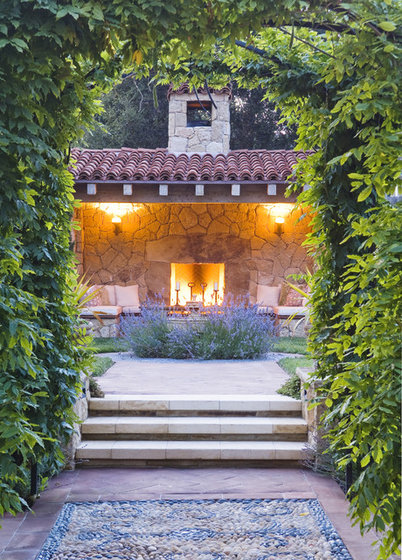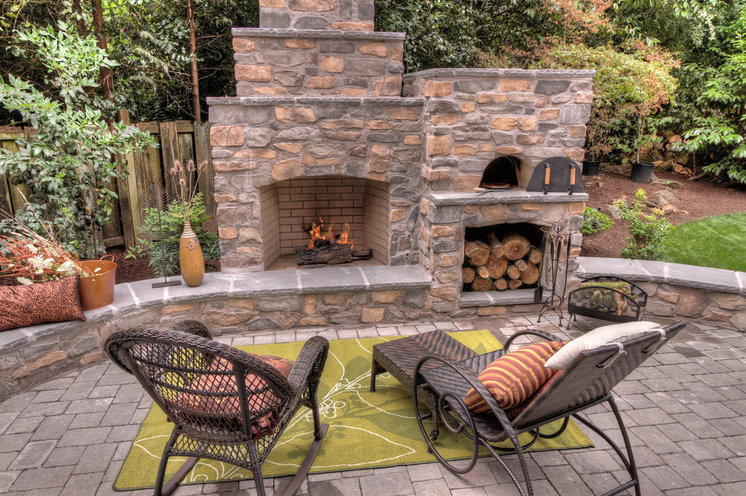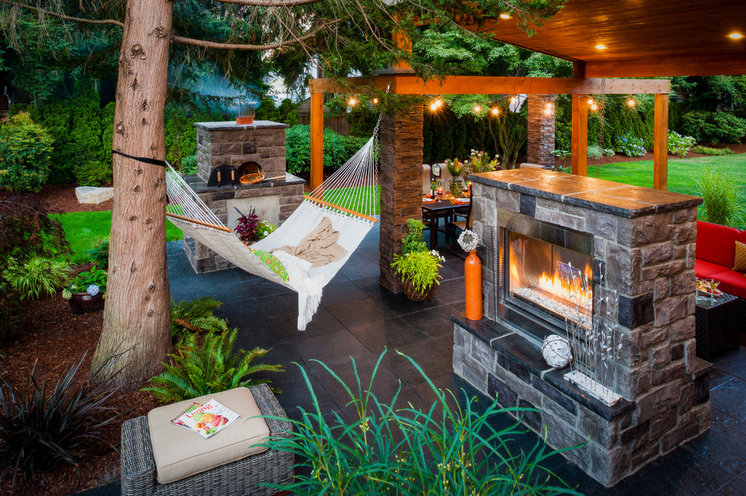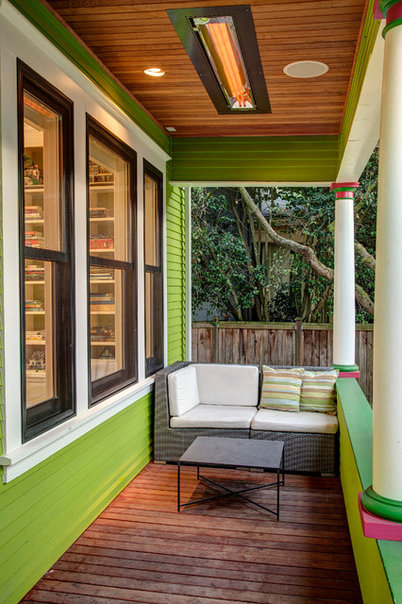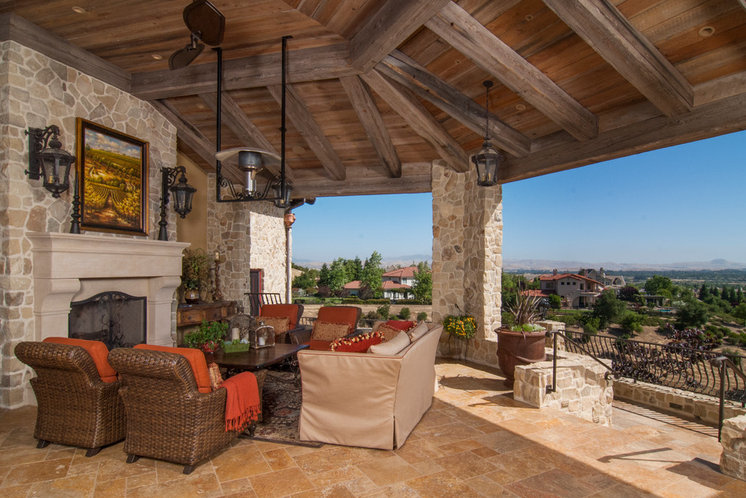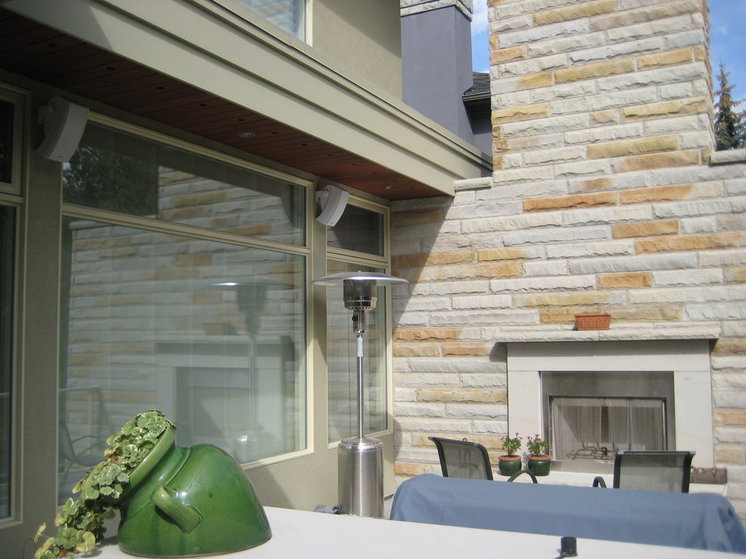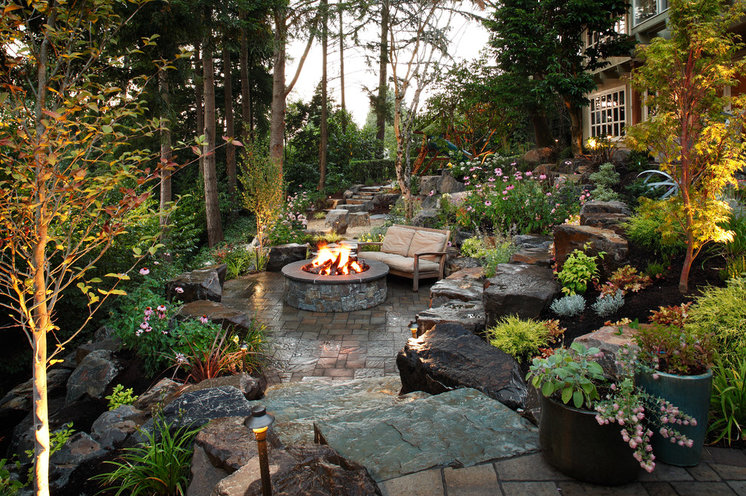Typically less expensive than fireplaces, fire pits can also summon guests with the promise of lovely ambient heat. There are portable, prefabricated options readily available, as well as built-in custom design options in a wide range of styles and costs.
Portable wood fire pit. This is your simplest, least expensive option. Run down to your hardware store or jump on the Internet, and for as little as $100, you’ve got a fire pit. Pick up some firewood, throw the unit out on the deck and voilà, it’s s’mores time!
This is a low-cost, and thus low-risk, option. But with all wood-burning units, local wood-burning ordinances need to be followed, which can sometimes result in spare-the-air, no-burn days, during which your fire pit may not be legally usable. Also, you will need to stay stocked with firewood, but the portable, wood-burning fire pit provides authentic heat at a low cost, and its ease of installation simply cannot be matched.
A wood-burning fire pit usually takes less time to plan for and can be significantly less expensive to build than a built-in gas fire pit. In some cases you may not need a permit for a wood-burning fire pit, and since no gas line is required, there are often more location options available.
The construction of a wood-burning fire pit can likely be completed within one week.
Having a party? Why bother with stoking a fire, and why should people get smoke in their eyes? Flip a switch just before the doorbell rings, and the fire will be sure to burn high and true.
There is not much of a downside to this option, except, of course, that the cost of a natural-gas fire pit typically runs well over $6,000, depending on the proximity to available gas; the gas ring and log features selected; and the design characteristics of your fire pit. You will always need to get a permit for a built-in gas fire pit, and that can be a time-consuming and somewhat costly proposition.
A built-in custom gas fire pit will likely take about two weeks to construct, once the permit approval process is complete.
Usually built-in and more expensive than fire pits, fireplaces can offer a grand focal point that can be the central feature of your yard. They are more visible than fire pits and take a little more time to construct.
Nothing is more inviting outdoors than the warm glow of a fireplace beyond a windowpane. This is the ultimate visual feature, as it is more visible than a fire pit, and can provide both a grand statement and cozy intimacy.
Fireplaces are typically more expensive than fire pits due to their size, which can result in substantially higher foundation and masonry costs.
A built-in wood-burning fireplace is likely to run around $10,000, though size, materials and geographic region can substantially impact the final cost. In some jurisdictions, the approval process for an exterior wood-burning fireplace is simpler than for gas, so it may be easier to plan and begin the construction of your wood-burning fireplace.
A wood-burning fireplace usually takes about two weeks to construct.
There are simple portable propane lamps readily available at a relatively low cost, and built-in gas and electric lamps that are less conspicuous while radiating a warm glowing heat from above.
Electric. The great thing about built-in electric heat lamps is that they can be installed flush to a ceiling, so they are hardly noticeable except on those cold nights when they make themselves felt. They provide extremely reliable, very strong heat output, and can be used to create more warm and usable outdoor space than can be achieved with other options.
You can expect to pay a minimum of about $2,000 per lamp, including electrical installation, although this cost can vary depending on the manufacturer and installation details. A permit is always required, and there are very specific design clearances that must be maintained.
In the space here, we used a gas heat lamp with a traditional-style fitting for an authentic Tuscan-style home.
The cost of gas lamps is similar to but typically slightly higher than,electric, because gas costs more to provide than electricity in most locations. A permit is required for installation.
The downside is they take up space, and as is the case for portable gas fire pits, their propane tanks need to be periodically refilled.
